Ancient Chinese philosophers called peas "a symbol of fertility, purity and wealth," medieval French chefs served dishes with valuable food to the royal table. In Russia, before the advent of potatoes, the main dish was pea porridge, which covers the human need for vegetable protein, vitamins and carbohydrates, mineral salts and trace elements. Lean peas boiled calorie content was low, but it replaced the meat products in the daily menu. Easily digestible vegetable protein contained a unique composition of amino acids - it was not for nothing that peas were called "meat for the poor." Delicious boiled peas were part of a wide variety of dishes: soups and pies, sauces and stews, cereals and noodles.
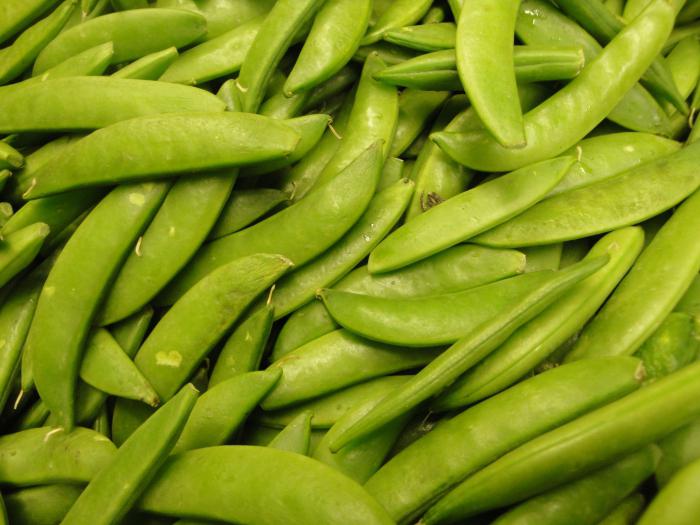
Cooked peas: calories and nutritional value
According to the classification, there are three types of plants such as peas. Its calorie content, as well as useful properties are due to belonging to a certain group.
In peeling peas, the peas themselves have a regular round shape, when maturing they become stiff. For long-term storage, whole peas are dried. The calorific value of such a product is quite high - from 298 to 311 kcal per 100 g of dry grains. An analysis of the energy value of peas shows that of 298 kcal, 82 kcal is the share of proteins, 18 kcal of fats, and 198 kcal of carbohydrates. Table peas are usually used for making soups, cereals or mashed potatoes, side dishes. Boiled peas boiled calories in mashed potatoes or in soups are low, only 60 kcal, while it is rich in protein and is great for diet food.
Unlike husked varieties, under-grown grains with a high moisture content are valued in sugar peas. Beans of this pea are sweet in taste, fleshy, but they wrinkle during the drying process.
Peas of brain varieties, when ripe, change their round shape, wrinkle, resembling the meninges. These varieties are rich in sucrose, sweet in taste, and are used for canning. They are unsuitable for heat treatment, although they have the lowest calorie content of all pea varieties.
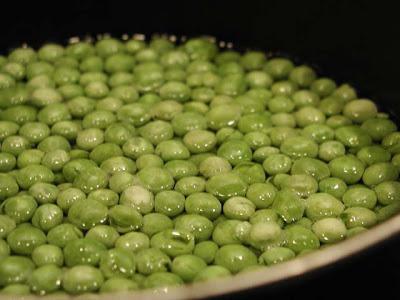
Dietary dish: boiled peas, calorie content and benefits
Peas are often called the “king of grains” for its rich composition: a whole range of B vitamins, vitamins A and C, PP and E. The amount of minerals in peas is very large: calcium and potassium, phosphorus, magnesium, iron, iodine, selenium, sulfur chlorine and others. In an annual plant there are important amino acids, pyridoxine, many enzymes, fiber. Glucose, as the peas ripen, turns into starch. Pea dishes are good for dieting, as well as for those who observe religious fasts.
Studies by Canadian scientists have confirmed that pea vegetable protein is highly digestible, an excellent alternative to meat, has a positive effect on the functioning of the heart and blood vessels, normalizes blood pressure, and eliminates swelling. Cooked peas, the calorie content of which can be a pleasant surprise for losing weight, serves as an excellent hearty dish during a period of active weight loss. Boiled peas are also useful for people suffering from anemia and malfunctioning of the kidneys, gastrointestinal problems (constipation, heartburn, and other disorders). What else is boiled peas valuable? The calorie content and beneficial properties of this “king of the legume family” can warn against problems with the thyroid gland (goiter), atherosclerosis, and obesity. In addition, boiled peas restores metabolism and relieves headaches.

What happens to peas during cooking?
An amazing product - peas! During heat treatment, it significantly loses its calorie content, but at the same time retains all the healing properties! So, for example, if you cook crushed peas, you can get 115 kcal per 100 g of finished product, green peas - 160 kcal, in pea soup - 60-66 kcal. But if you add additional ingredients to boiled peas, what calorie content will be obtained? The same pea soup with onion frying will result in 73 kcal, and if you add smoked meat to this dish - 103 kcal. The energy value of pea puree will also differ if it is enriched with various goodies. In its pure form pea porridge (puree) without additives - 60 kcal, with butter - 103 kcal, and with mushrooms (champignons) - 140 kcal!
How to cook peas
Recommendations for the preparation of cooked peas may vary depending on the variety of "beans and lentils brother", as well as the method of its preliminary processing. Whole grains of peas without soaking are not amenable to digestion, so you need to fill them with a double volume of water and leave overnight (6-12 hours). The higher the temperature in the room where the peas are infused, the shorter the time period should be, since chopped and whole peas have the ability to oxidize when they are in the water for a long time. Therefore, in eastern culture, there are several secrets to cooking whole or chopped peas without soaking.
One recipe indicates that you can add 1 tsp to a five-liter pan. baking soda (without a "slide"), then the product will easily break apart. In another recipe - pour the washed peas with a small amount of water and put on fire, when it boils - add ice water. From the temperature difference, the peas burst. It turns soft boiled peas. Calorie content per 100 grams of such a dish is 60 kcal, you can add salt only at the end of cooking. Chopped peas, crushed, soaking is optional, but it is cooked for a long time, about an hour.
For the convenience of cooking, modern manufacturers present crushed peas processed with steam. Such a product will be ready in 35-40 minutes. It is often cooked packaged in bags, which brings additional comfort, since the boiled pea mass does not settle to the bottom and does not burn. For the same reason, any variety of peas is cooked over low heat in thick-walled dishes, with frequent stirring.
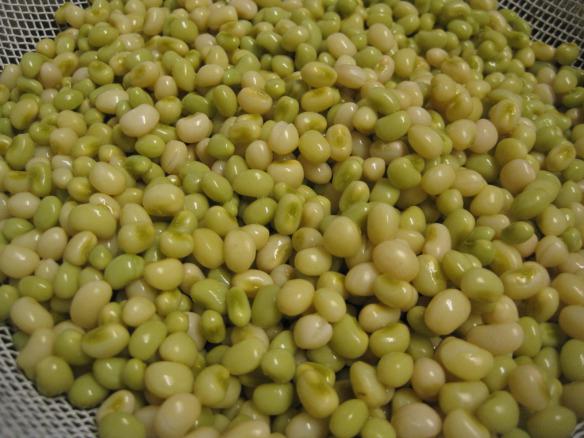
How to make boiled peas tastier?
If you pour boiled peas with meat, mushroom or vegetable broth, its calorie content will increase slightly, but the dish will turn out to be more nutritious. Especially aromatic and tasty is obtained peas, cooked in bulk. The more porridge and cabbage cooked at the same time, the better the taste of the dishes will be. Peas are also obtained faster and softer, during the cooking of which butter or vegetable oil is added (a small amount). Pea milk gives a delicate taste if you add it to water during cooking. Excellent puree is obtained from green peas. It does not contain a starchy aftertaste, but becomes tender and melting in the mouth. It is not necessary to defrost freshly frozen peas, which can often be found in our supermarkets. It is ready for heat treatment. Young pods are dipped in boiling unsalted water, and salt is added to taste at the very end of cooking, when the peas become soft.
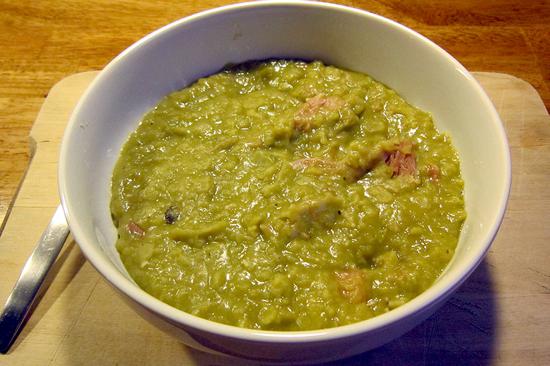
Features of a pea diet
The advantages of including boiled peas and various dishes from it in the daily diet of those people who want to lose weight are:
- good tolerance;
- lack of hunger;
- preservation of muscle tissue;
- a variety of additional ingredients;
- balanced diet;
- availability of legumes;
- cleansing effect;
- improved metabolism.
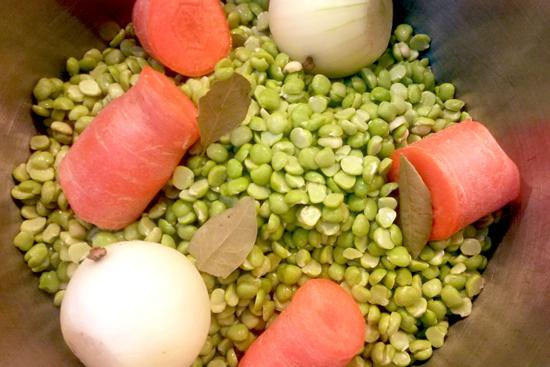
And in conclusion ... Peas and cosmetology
Cooked peas in the form of mashed potatoes can be used as a component of whitening face masks that improve its color, rejuvenate the skin, eliminate puffiness and blackheads.